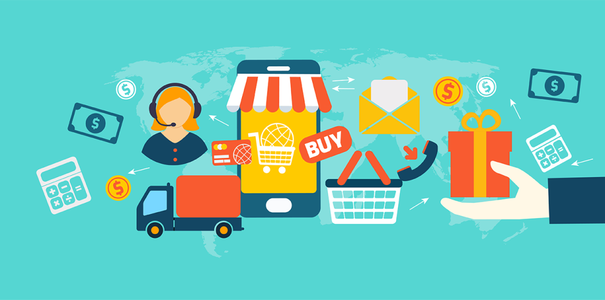 Business
Business
How to Successfully Run Your Online Store on Autopilot Easily
Introduction:
Running a Shopify store is exciting until you’re stuck managing orders, tracking inventory, answering customers, and trying to keep up with marketing. Let’s be real: it’s not easy doing everything manually. That’s why, in 2025, smart sellers are turning to Shopify automation. It’s the ultimate way to scale your eCommerce business without burning out. In this Guest Post, we’ll cover what Shopify automation is, how it works, the best tools and services, and how you can fully automate your store without losing control.
What is Shopify Automation?
Shopify automation is the process of using tools, apps, and expert services to handle repetitive tasks in your Shopify store. These tasks may include:
- Product importing
- Inventory syncing
- Order fulfillment
- Email marketing
- Abandoned cart recovery
- Customer service
- Analytics reporting
The goal? Run your business without being chained to your screen 24/7.
Why Shopify Automation is a Game Changer in 2025
With rising competition and customer expectations, staying ahead requires more than just great products. You need fast systems, flawless fulfillment, and instant communication.
Here’s how automation helps:
- It saves You Time by automating the boring stuff so you can focus on strategy, scaling, or simply enjoying life.
- It increases the Speeds Up Fulfillment, and Automated order processing ensures faster shipping and happier customers.
- Its Increases Sales and Automated emails, retargeting, and up-sell flows can increase your revenue without extra effort.
- It Reduces Human Error with no more manual copy-pasting or forgetting to restock; automation keeps things smooth.
Best Areas to Automate in Your Shopify Store
If you’re wondering what exactly can be automated, here’s your cheat sheet:
- Use apps like DSers or AutoDS to automate order placement if you’re drop-shipping. For warehouses, Ship Station or EasyShip handles packing and tracking automatically.
- For product Management, Bulk import products, update stock levels, and sync pricing using tools like Stock Sync or Spocket.
- For Email & SMS Marketing: Set up abandoned cart reminders, welcome flows, and product suggestions using Klaviyo, Omnisend, or SMSBump.
- For Customer Support, use Gorgias or Tidio to automate responses, handle common queries, and reduce manual chat load.
- Accounting & Invoicing, integrate with QuickBooks or Xero to automatically manage transactions and generate reports.
Shopify Automation vs Manual Management – A Quick Comparison
| Feature | Manual Store | Automated Shopify Store |
| Order Processing | Manual every time | Hands-free, real-time |
| Marketing Campaigns | Created one-by-one | Trigger-based, pre-scheduled |
| Inventory Management | Prone to mistakes | Synced across suppliers |
| Customer Engagement | Reactive | Proactive + instant replies |
| Scaling Potential | Limited by time | Scales easily with tech |
If your goal is to build a profitable and passive income stream, automation wins hands down.
How to Start Shopify Automation (Step-by-Step)
Here’s a simplified roadmap to automate your Shopify store:
Step 1: Choose Your Business Model
Dropshipping, print-on-demand, or private labeling each model has its automation tools.
Step 2: Set Up Fulfillment Automation
Use apps like AutoDS, Printful, or Oberlo alternative (if available in your region) to process orders automatically.
Step 3: Automate Marketing
Integrate Klaviyo for email automation and Facebook Ads Manager for retargeting.
Step 4: Set Up Analytics
Use tools like Lifetimely or Conversific to monitor store performance without crunching data manually.
Step 5: Add Customer Service Tools
Install a chatbot and connect support apps that reply to basic queries and escalate issues only when needed.
DONE-FOR-YOU SHOPIFY AUTOMATION: IS IT WORTH IT?
If you’re short on time or don’t want to learn everything from scratch, Shopify automation agencies can set up and manage your store for you.
These services typically include:
- Store setup & design
- Product research & uploading
- Automated fulfillment setup
- Email marketing flows
- Customer support integration
- Ongoing performance reports
You just monitor the results and collect the revenue.
PRO TIP:
Always check for case studies, reviews, and clear ROI metrics before choosing a Shopify automation service. Avoid agencies promising “overnight success” or “guaranteed profits.”
TOP SHOPIFY AUTOMATION TOOLS IN 2025
Here are some of the best tools that store owners swear by:
| Tool | What It Does |
| AutoDS | Full dropshipping automation |
| Klaviyo | Email & SMS flows |
| Gorgias | AI-powered customer support |
| DSers | Bulk order processing from AliExpress |
| Spocket | U.S. & EU dropshipping products |
| Zapier | Connects apps & automates workflows |
Shopify Automation for Beginners: What You Should Know
New to Shopify? Here are a few things to keep in mind:
| 1 | Start Small | Automate one part at a time (start with order fulfillment). |
| 2 | Use Free Trials | Most tools offer 7–14-day trial tests before you invest. |
| 3 | Keep Monitoring | Automation isn’t 100% hands-off; you still need to monitor performance weekly. |
| 4 | Stay Updated | Shopify’s app ecosystem evolves quickly, so always look for better integrations. |
Conclusion
Shopify automation isn’t just a trend; it’s the future of eCommerce. If you’re running a side hustle or building a 7-figure brand, automating your Shopify store helps you sell smarter, grow faster, and live freer. From fulfilling orders to re-engaging customers automatically, you can build a highly profitable business that doesn’t consume your life. So, whether you’re a beginner or a seasoned seller, it’s time to stop doing everything manually and start automating like a pro.









